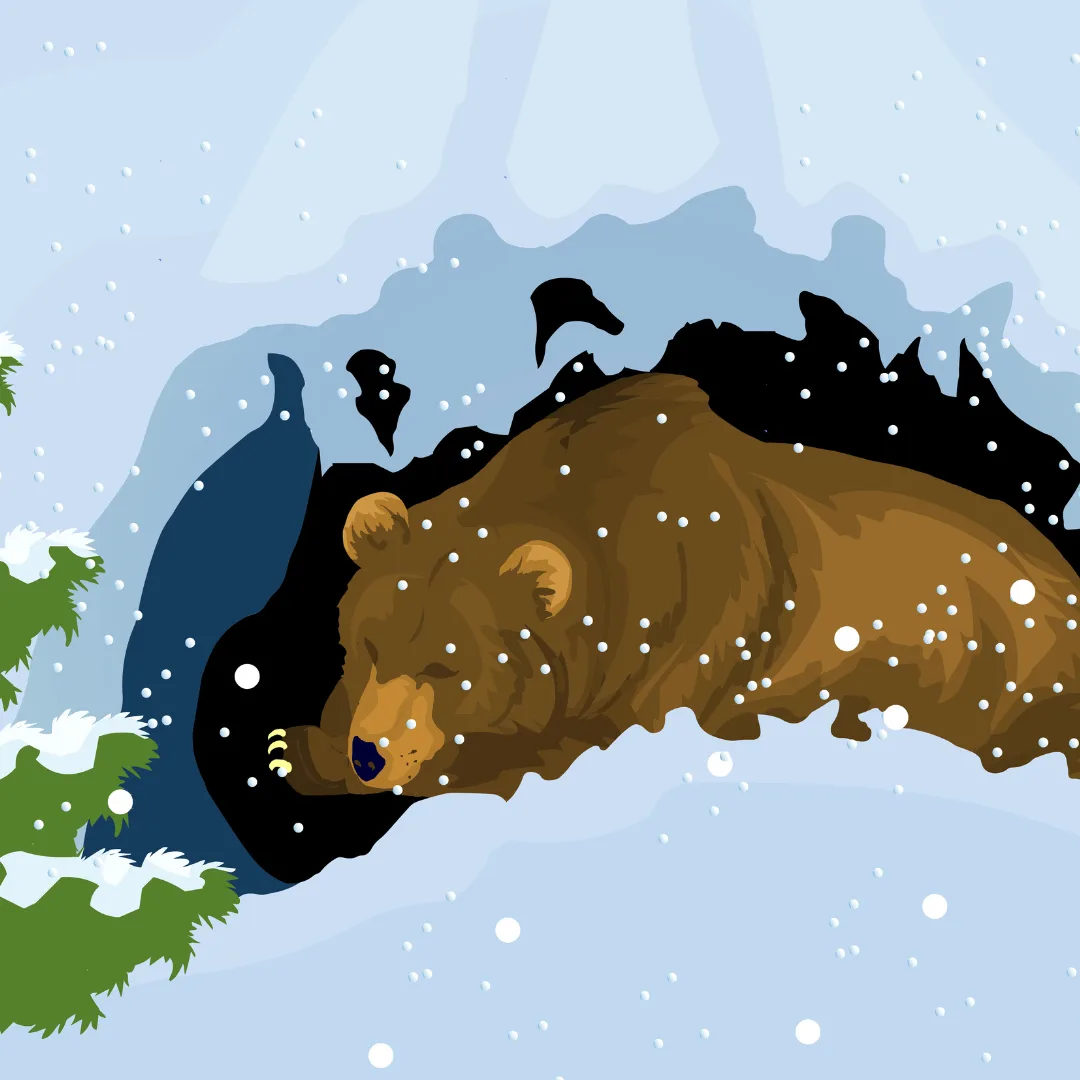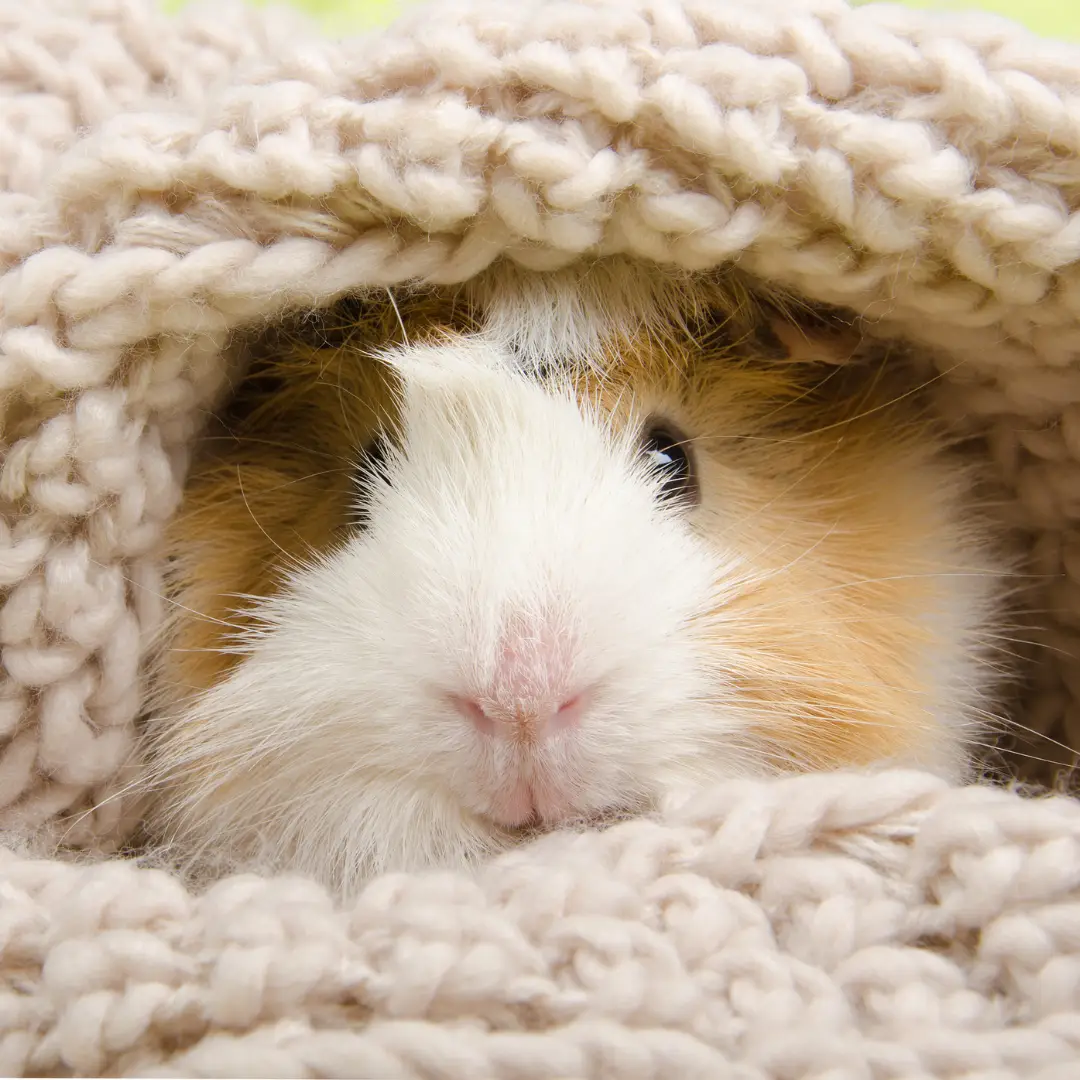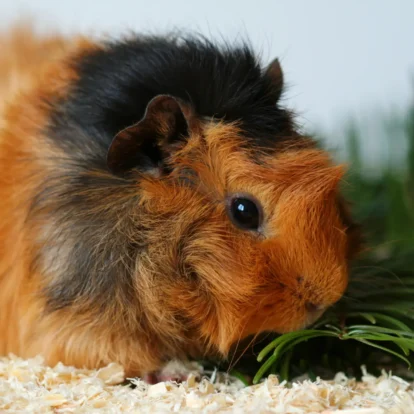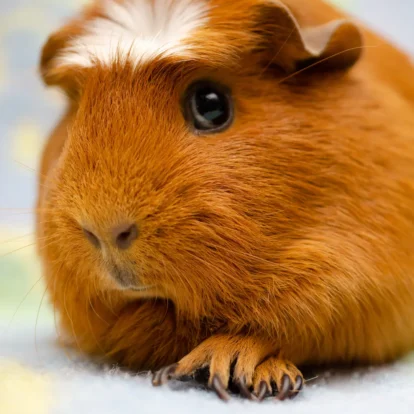Table of Contents
Introduction
Hey there, fellow guinea pig enthusiasts! 🐹 Have you ever wondered, “Do guinea pigs hibernate?” You’re not alone; many pet owners have pondered this question as winter approaches. ❄️
Now, we all know that certain animals, like bears and squirrels, hunker down for a long, deep sleep during the even months of winter. But what about our tiny, furry friends? Do they also need to conserve energy to survive the cold temperatures? Or do they carry on as usual?
In today’s post, we will dive deep into this winter mystery and shed some light on the matter. Stick around as I share my insights on hibernation and torpor –tor-what? 😮- and reveal whether or not guinea pigs follow suit like their fellow critters, the bears and mice.
I’ll also provide you with my tried-and-tested tips on preparing your piggie for winter and give you a sneak peek into the winter routine I follow with my lovable cavies.
So, without further ado, let’s jump right in and rest our curiosity! 🕵️♀️💡
What is Hibernation?
Alright, folks! Before discussing guinea pigs and their winter habits, let’s quickly detour ‘Science Lane.’ 🛤️🔍
What exactly is hibernation? In layman’s terms, it’s like hitting the ‘snooze’ button on life when the temperatures drop. 🌡️❄️ It’s a survival technique that many animals use to get through the cold conditions of winter. 🌨️🐻
Now, you might think you know what hibernation is. We’ve all seen those cartoons where bears curl up in their caves, fall asleep, and wake up when the flowers bloom, right? 🌼😴 Well, it’s a bit more complex than that.

Hibernation is not just a long nap through the winter. It’s a deep sleep that allows animals to conserve energy by slowing their metabolism and reducing body heat, breathing, and heart rate to barely noticeable levels. It’s like switching your body from being a gas-guzzling V8 to an energy-efficient hybrid. 🚗💨
You see, when winter rolls around, and food becomes scarce, some animals, like bears, decide it’s time to chill… literally! 🐻❄️ They eat as much food as they possibly can (I mean, who hasn’t dreamt of that? 😅), find a cozy spot to hibernate, and tuck themselves in for the long haul.
Their body temperature drops, their heartbeat slows down, and they fall into a deep sleep. It’s almost like they’ve turned off, but not quite. They’re still alive but in a state of suspended animation. It’s as if Mother Nature has her very own pause button! ⏸️🌍
Now, humans don’t hibernate in the way that bears do. Trust me, I’ve tried. The most we can manage is a Sunday afternoon nap after a big roast dinner! 😂 But aren’t you curious to know if our little guinea pig friends have a hidden ‘superpower’ to hibernate? Well, keep reading – the answer might surprise you! 🐹💤
Torpor vs. Hibernation: What’s the Difference?
Bear with me for a moment because I’m about to drop a real tongue-twister of a word on you: torpor. 🤔 Now, if you’re like me, you probably just furrowed your eyebrows and thought, “What in the world is torpor?” Well, my pet-loving friends, it’s time for a fun fact! 🎉
Torpor is a state that small mammals like our adorable guinea pigs can enter to deal with sudden changes in their environment, like a drop in temperature. 🐹💨 It’s a bit like hibernation lite if you will.
You see, in the wild, when food is scarce, or the weather becomes harsh, these little fellas can switch their bodies into a low-energy mode. Their body temperature drops and their metabolism slows right down. It’s like when your computer goes into sleep mode, but for our furry friends, it’s a whole lot cuter. 😊
Now, you might be thinking, “That sounds a lot like hibernation to me!” And you’re not entirely wrong. But there’s a fundamental difference. While hibernation is a long-term, seasonal shutdown (like our bear buddies in winter 🐻❄️), torpor is more of a short-term solution, lasting anywhere from a few hours to a few days. It’s like the difference between a full-on winter’s nap and a power nap to recharge your batteries.
But don’t worry, my fellow piggy parents! 🐾 Our domesticated guinea pigs have been bred so that they rarely, if ever, need to go into torpor. Their cozy indoor habitats and regular feedings mean they don’t have to worry about food scarcity or sudden temperature changes. Don’t get me wrong, though; I’ve seen my little piggies zonked out after a big play session, but that’s just regular sleeping, not torpor or hibernation. 😴
So, next time you notice your guinea pig acting a bit sluggish, don’t panic! It’s likely just a sign they’ve had a big day. But if you do ever suspect torpor, a quick visit to the vet will put your mind at ease.
Remember: our pets depend on us to keep them safe, especially when their bodies naturally react to wild conditions that don’t exist in their domestic world. 🏠💕
Do Guinea Pigs Hibernate?
So, the big question: “Do Guinea Pigs Hibernate?” 🤔 Well, the quick answer is: No, they don’t! But let’s take a closer look, shall we?
First off, remember that guinea pigs actually hail from South America, where the climate is relatively steady and warm. 🌞 It means that these little fellas have never had to evolve the kind of hibernating habits that other animals in colder climates have.
It doesn’t matter what breed or species your guinea pig is; these critters just aren’t cut out for hibernation.
Now, let’s get a bit more scientific. 🧪🔬 A wealth of research and scientific studies have shown that guinea pigs’ genetic and biological makeup simply does not allow for hibernation. It’s not just about the lack of need in their environment but also their physiological limitations.
So why do some pet owners still wonder if their guinea pig is hibernating? Well, there may be a few reasons for this:
- First, a guinea pig’s natural response to fear or stress is to freeze. This can be mistaken for hibernation. 🐾
- Additionally, suppose you notice your guinea pig sleepy after a big play session. In that case, it’s likely just regular sleeping, not torpor or hibernation. 😴
- Lastly, some pet owners may confuse hibernation with a guinea pig’s typical “lazy” behavior. Like humans, these creatures have different activity levels and can often be found lounging around in their cozy little hideouts. 🛌
So if you spot your guinea pig appearing sleepy or inactive, don’t worry- it’s just their normal sleep cycle!
Preparing your Guinea Pig for Winter
As the leaves start to fall and the chill sets in, we guinea pig parents know it’s time to get our little pals winter-ready! The key is maintaining a comfortable temperature because, unlike us, they can’t layer it up like an onion with scarves and sweaters. 🧣❄️
Your guinea pig’s cage should be away from drafts and in a warm room, ensuring it’s never too cold or hot. Aim to keep their environment at an ideal temperature between 65 to 75 degrees Fahrenheit.
Social creatures as they are, piggies love company, so their habitat should feel secure and allow for plenty of socializing. This is especially important during the long winter nights when temperatures can drop unexpectedly.
Layer the cage with plenty of warm bedding to ensure good insulation and retain heat. Throw in extra fleece blankets or add a snuggly hide where they can retreat to keep cozy.
Now, let’s talk diet – it’s as important as ever during the colder months. Just like us, our animal friends need a bit more energy when it’s cold; they’re not just eating for fun.
Hay is to guinea pigs what coffee is to humans ☕️: absolutely essential! Make sure there’s plenty available to munch on because eating helps them stay warm. Plus, always check their water isn’t freezing over. A sudden drop in temperature can mean a frozen water bottle, leaving our fuzzballs high and dry. 😓
Remember to keep a watchful eye on their behavior, too. Any change in eating habits or activity levels might warrant a trip to the exotic vet.
Guinea pigs are pretty good at hiding discomfort, so staying observant is vital. And, of course, if you have other pets, make sure they’re being friendly neighbors by not stressing out your guinea pig with too much pizzazz.
Nothing beats seeing your guinea pig popcorn with joy in a toasty hide after you’ve set it all up just right. With these tips, you’re on your way to giving your furry friend a five-star winter retreat! 🏡💕
DIY Winter Hideouts and Snuggle Spots
Creating a cozy winter hideout for your guinea pigs can be a fun DIY project and also a great way to ensure your little buddies stay warm during the cold months. 🛠️ Who says you can’t mix function with charm, right?
Personally, I love repurposing old wooden boxes or even sturdy cardboard boxes into snuggle spots. You must ensure the entrance is wide enough for your guinea pig breeds to hop in and out quickly and smooth out any rough edges to prevent boo-boos.
Now, if you’re feeling extra creative, you can add removable roofs lined with fleece, making them the perfect retreat for that much-needed sleep.
Maintaining the correct temperature is crucial, so why not insert a small heat pad under a layer of blankets for that extra cozy touch? Just monitor the heat closely because a sudden temperature change isn’t something our tiny friends appreciate. Remember, it’s all about keeping that body temperature steady.
A tip from one piggy parent to another: cut up old sweaters to line the floors of your homemade shelters. They provide additional warmth, and your guinea pigs will love the soft fabric under their tiny paws. Just be sure to use materials that won’t unravel easily to keep your little ones safe!
For those with more than one animal, consider integrating a mini hay bar adjacent to the hideout. It’s like a cafeteria for your other pigs—you can fill it with loads of hay and watch them nibble away happily.
The species we so love are always ready for a snack, and well-fed guinea pigs mean warm and content guinea pigs.
So there you have it. You can craft the ultimate winter palace for your guinea pigs with a sprinkle of creativity and a dash of love. Keep in mind that warmth is vital for these critters, so let those DIY skills shine and give them the heat they need to thrive!
My Winter Routine with My Piggies
As a dedicated piggy parent, my winter routine revolves around ensuring my fur babies stay warm and bubbly despite the chilly weather. 😊 As I mentioned before, guinea pigs do not hibernate, so keeping an eye out for the signs that they’re feeling the cold is critical.

Mornings start with a quick health check – I look for any changes in behavior or appetite since these little guys should eat consistently, given their speedy metabolism.
During the day, it’s all about making sure they get their exercise but remain in the warm climates of their cozy corners. If the sun peeks out, I’ll sometimes let them have a brief outing in a secure area because sunshine is great, but too much cold? Not so much. 🌞
Cuddle sessions are hands down my favorite part – and theirs too, I’m sure! There’s nothing like snuggling up with a lap full of fluff, and I’ve noticed that piggy purrs are even more prevalent in winter; it’s as if they’re extra grateful for the warmth.
Do guinea pigs dream of electric blankets? If my piggies could speak, they’d say yes!
As night falls and temperatures dip, I make sure their bedding is fluffed up to princess-and-the-pea levels for that royal sleep. I can’t help but laugh at their little ‘popcorn’ jumps when they burrow in for the night – just more evidence of how much they love their kingdom of coziness. 🏰
That’s a wrap on our cold-weather rituals. Animals like guinea pigs rely on us to adapt to their environment as the seasons change, and it’s a responsibility I cherish.
From observing their species-specific needs to ensuring they’ve got all they can eat and more, it’s a labor of love that keeps them – and my heart – warm through winter.
Wrapping Up
Do guinea pigs hibernate? The quick answer is nope! These adorable critters are not built for hibernation, unlike some of their furrier friends. 😊
In the colder months, it’s super important to watch for other symptoms that might indicate something is off. If your piggy pal is extra lethargic or not eating, it could be mistaken for them just being “dead to the world” because they’re taking a long snooze. But in reality, they could be in trouble.
As diligent piggy parents, we must be attentive to our pets’ behaviors during the cold. It’s vital for these little guys to maintain a steady heart rate and warm body temp to stay in tip-top shape.
So, while your guinea pigs won’t be hunkering down for a big sleep like some hibernating animals do, they certainly do love their rest – just in the warm, non-hibernating kinda way. ❣️




